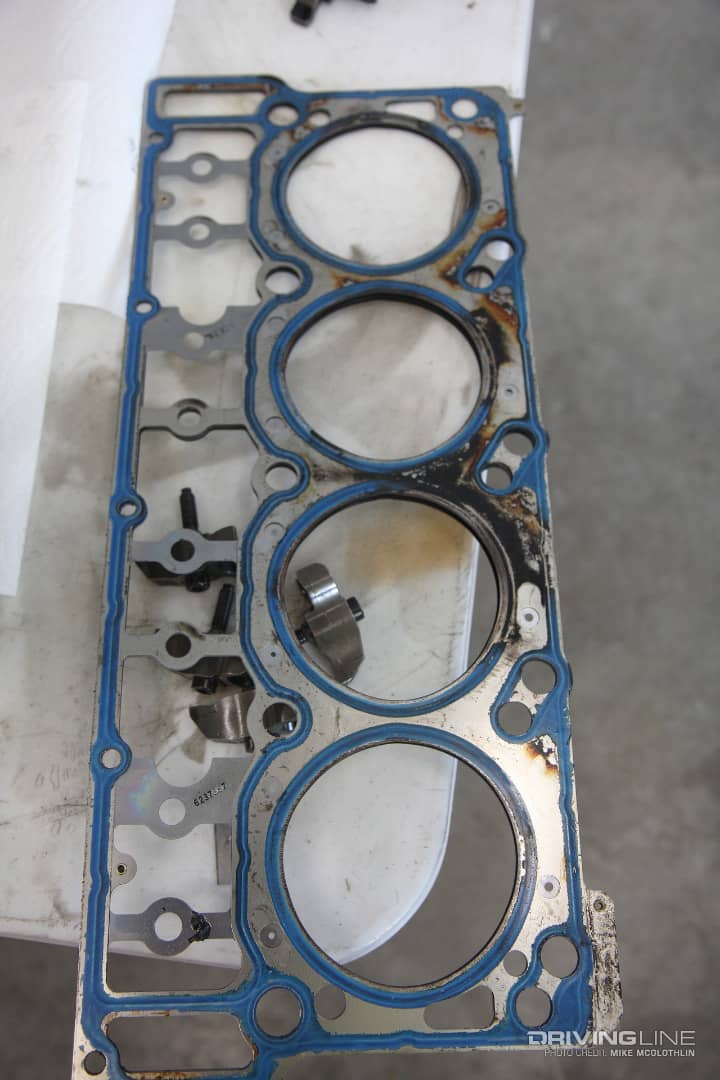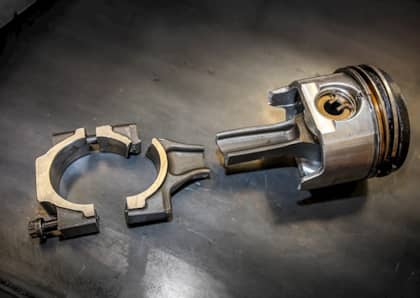6.0L Power Stroke Problems, Part 3: Head Bolts
A few years ago, you could walk into any truck shop in North America and spot an ’03-’07 Super Duty with its cab off. In many regions of the country, that’s still the case today. Let’s face it, despite all of its problems the 6.0L Power Stroke is best known for head gasket failure. But why does it happen? How do you know when it’s happening? And what can you do to make sure it doesn’t happen again? Below, we’ll answer that first question from an engineering and engine theory standpoint. As for the second, we’ll divulge the easiest way to diagnose it. And for the last question, we’ll list the parts you need to buy and the procedures you need to follow in order to rule out this common 6.0L problem for good.
Torque-To-Yield Head Bolts

First and foremost, it’s not the head gaskets’ fault on the 6.0L Power Stroke, but rather it’s the fasteners entrusted to keep the heads clamped to the block that fail. Torque-to-yield (TTY) head bolts are employed on the 6.0L, which is nothing new in modern engines, especially those with multi-layer head gaskets. A TTY fastener is designed to stretch within a controlled yield range and once this happens it (in theory) provides more consistent clamping force than a conventional bolt. However, extreme cylinder pressure—created either by a stock engine being placed under immense load or an engine that’s been treated to aggressive aftermarket tuning—eventually forces the TTY bolts out of their elastic range. When this happens, maximum clamping force is gone forever.
4 Bolts Per Cylinder

The biggest issue isn’t the torque-to-yield design of the 6.0L’s head bolts, it’s the lack of them. There are only four head bolts per cylinder (and just 10 per bank) with sharing. By comparison, there were six head bolts per cylinder on the 7.3L Power Stroke that preceded it—an engine that rarely experiences blown head gaskets. Despite the 6.0L’s head bolts measuring 14mm in diameter (vs. the 7.3L’s 12mm diameter), there simply aren’t enough anchor points. On the 6.4L Power Stroke, the engine that followed the 6.0L, the TTY head bolts were increased in size to 16mm in diameter.
Dead Giveaway(s)

Under the hood, the most common sign that you’ve lifted a head is this: coolant residue left behind from the system being pressurized. This is the notorious “puking” you’ve no doubt heard about in reference to a blown head gasket. Inside the cab (and provided it’s cold outside), your heater vents blowing cold air after the engine has already come up to operating temp is a tell-tale sign that you’ve lost a head gasket. As an engine begins to lose coolant (effectively lowering the amount of antifreeze in the system), one of the first things that happens is a lack of coolant flow to the heater core.
The Broken Seal

With any failed head gasket, it’s simply a matter of combustion pressure following the path of least resistance. The dark spots visible here show you exactly where exhaust gases were escaping. When the TTY bolts stretched, the head lifted and combustion was no longer contained. As a result the cooling system quickly became pressurized. Added horsepower, namely in the form of aftermarket programming, increases the amount of boost pressure, drive pressure and cylinder pressure the engine sees—all of which dramatically increase the chance of stretching the head bolts and lifting a head. To be clear, stock 6.0L engines pop head gaskets, too, but they typically last much longer before experiencing the failure.
The Solution: ARP Head Studs

When the inevitable head gasket issue arises, the only real solution is to install better fasteners when everything goes back together. Enter one of ARP’s all-time best-selling products—its ARP2000 head studs (PN 250-4202). Made of a high-quality, chromoly steel alloy ARP calls ARP2000, its studs feature a tensile strength of 220,000 psi. Combine that with the very nature of a head stud allowing for deeper thread engagement in the block, and you have vastly improved head-to-block clamping force. For nearly all independent diesel repair facilities, ARP head studs come standard with any 6.0L head gasket job.
Torquing The Head Studs

Properly seating a freshly resurfaced or brand-new set of 6.0L heads on new gaskets and a resurfaced block calls for strict adherence to both Ford’s recommended head fastener torquing sequence (the common, center-out method) and ARP’s instructions. With ARP’s Ultra-Torque fastener assembly lubricant applied to the studs’ threads, the washers and the nuts, the nuts are torqued in three phases, culminating in a 210 ft-lb final specification. Starting at 70 ft-lb for the first round and bumping up to 140 ft-lb for the second sequence is commonly done before the third and final (210 ft-lb) round. We would even go so far as to check and then re-check each nut’s torque spec before moving on to the next sequence. You can never be too careful in this process.
The Cab Doesn’t Have To Come Off

Although many (and we would argue most) technicians prefer to pull the cab off a 6.0L Super Duty in order to tackle a head gasket job, some are inclined to perform the work with the cab on the frame and the engine in the truck. Believe it or not, the latter method is what Ford’s Workshop Manual says to do…so don’t be concerned if you find your mechanic performing a head gasket job without pulling the cab. After all, the cost will be about the same. For the DIY’ers of the world, especially those of you without a high capacity lift in your garage, the cab-on method is the most viable option unless you want to pull the engine.

More From Driving Line
- Before you notice your 6.0L’s coolant boiling over, chances are pretty good you’ll experience EGR problems. You can read all about those headaches here.











